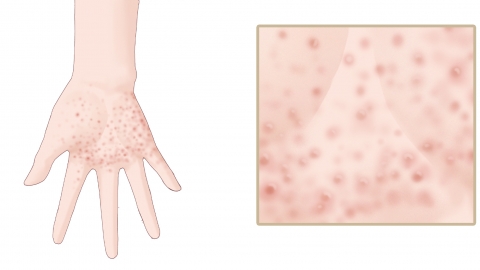How to care for infants and young children with sudden rashes
Typically, the care for infants and young children with exanthema subitum (roseola) generally includes temperature management, skin cleansing, dietary adjustments, ensuring adequate rest, and monitoring for abnormalities. Meticulous care can help the child recover smoothly. The details are as follows:

1. Temperature Management: Measure the child's temperature regularly, once every 4–6 hours, with special attention needed during nighttime. If the temperature is below 38.5°C, reduce fever by removing excess clothing and gently wiping the forehead and neck with lukewarm water. If the temperature exceeds 38.5°C, administer children's fever-reducing medication according to instructions to avoid febrile seizures.
2. Skin Cleansing: During the rash phase, gently wipe the skin with lukewarm water 1–2 times daily; there is no need for shower gel. After wiping, ensure the skin is dried promptly and kept dry. Dress the child in loose, breathable cotton clothing to minimize irritation and friction to the rash.
3. Dietary Adjustments: Provide bland and easily digestible foods, such as millet porridge, vegetable puree, and steamed egg custard. Frequently offer warm water or mild rice broth to compensate for fluid loss due to fever. Avoid giving greasy, sweet, or cold foods to reduce gastrointestinal burden.
4. Ensuring Rest: Create a quiet and comfortable environment for the child to rest, with soft indoor lighting. Encourage the child to stay in bed as much as possible, limit physical activity to avoid excessive fatigue that could delay recovery, and ensure sufficient sleep to support the body's healing process.
5. Monitoring for Abnormalities: Pay attention to the child's mental state, appetite, and bowel movements. If persistent vomiting, listlessness, rapid breathing, convulsions, or other abnormal symptoms occur, or if the rash lasts more than three days without fading, seek immediate medical attention.
Excessive intervention should be avoided when caring for infants with exanthema subitum; antiviral medications or topical ointments are unnecessary. Parents should remain patient, attend carefully to daily care routines, ensure proper indoor ventilation, maintain air circulation, reduce the risk of cross-infection, and help the child recover smoothly through the illness.






